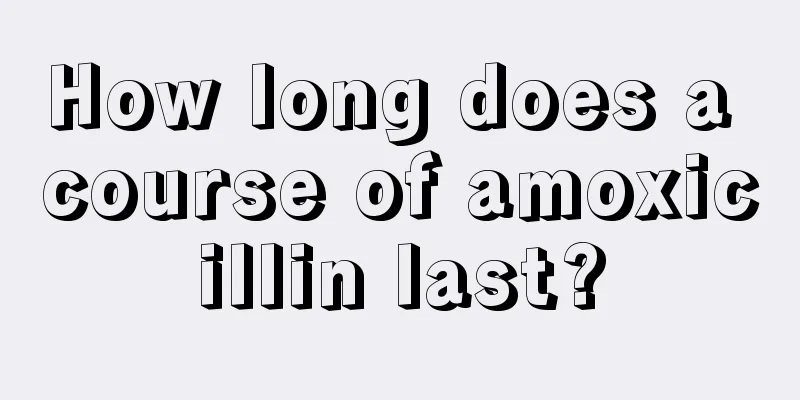How should acute severe aplastic anemia be treated?

|
In terms of clinical symptoms, the onset of acute severe aplastic anemia is very rapid. Generally, bleeding, fever and intracranial hemorrhage are the main symptoms of this disease. Therefore, when patients have such symptoms, they must receive timely treatment. If they are not treated in time, it will cause a series of hazards. So, how should acute severe aplastic anemia be treated? Severe aplastic anemia, also known as severe aplastic anemia, is the abbreviation of severe aplastic anemia. Severe aplastic anemia has an acute onset and progresses rapidly, with bleeding and infection and fever often being the first and main manifestations. Anemia is often not obvious at the beginning of the disease, but it becomes progressive as the disease progresses. Almost all of them have a bleeding tendency, and more than 60% have internal bleeding, mainly manifested as gastrointestinal bleeding, hematuria, fundus hemorrhage (often accompanied by visual impairment) and intracranial hemorrhage. Patients with severe aplastic anemia are in critical condition and should be given active treatment. Androgen alone is basically ineffective in treating severe aplastic anemia. Treatment options for severe aplastic anemia: 1. Immunosuppressive therapy: Commonly used immunosuppressants include antithymocyte globulin (ATG) or antilymphocyte globulin (ALG) and cyclosporine. Used alone or in combination, the effectiveness is 50%-70%. If one drug is ineffective, switching to another one can still work in about half of the patients. Combination therapy (simultaneous or sequential) is more effective than single therapy. ATG or ALG is a foreign protein, and its side effects include allergic reactions and serum sickness. Cyclosporine has damaging effects on the liver and kidneys. Foreign reports have shown that the long-term side effects of immunosuppressive therapy are acquired clonal diseases, including PNH, myelodysplastic syndrome, and acute leukemia, but they are rare in China. The effect of using hematopoietic stimulating factors alone to treat severe aplastic anemia is uncertain. Combining it with combined immunosuppression (ATG or ALG and CsA) to treat severe aplastic anemia may improve the efficacy. Therefore, combined immunosuppression is currently the main choice for the treatment of severe aplastic anemia in China. Other newer immunosuppressants such as mycophenolate mofetil and tacrolimus have also been tried in the treatment of aplastic anemia, but further data are needed before evaluation can be made. 2. Allogeneic hematopoietic stem cell transplantation: The quality defect of hematopoietic stem cells in patients with aplastic anemia is the basis of this treatment measure. Young (<40 years old) patients with severe aplastic anemia may consider using this drug if they have an HLA-matched donor. 50%-70% of patients can achieve long-term survival after transplantation. Due to the limitations of small family sizes and other conditions, this method has been rarely used in China to treat severe aplastic anemia. There have been successful reports of non-relative donor and umbilical cord blood stem cell transplantation in the treatment of severe aplastic anemia. With the establishment and expansion of domestic stem cell banks and the improvement of other conditions, more patients will have access to stem cell transplantation. The main factors affecting the efficacy of allogeneic hematopoietic stem cell transplantation are rejection and graft-versus-host disease. Repeated blood transfusions increase the chance of rejection, so patients planning to undergo allogeneic hematopoietic stem cell transplantation should avoid preoperative blood transfusions. Through the above introduction, I believe everyone has a detailed understanding of the treatment measures for acute severe aplastic anemia. The best treatment for this type of disease is through immunosuppression or hematopoietic stem cell transplantation. Both of these treatments are relatively good. |
<<: What should I do if I have sciatica?
>>: How to treat aplastic anemia?
Recommend
Nipple discharge is the first symptom of more than 90% of breast cancer patients
Nipple discharge is the first symptom of more tha...
What to do if your eyeball is scratched by a nail
Many people can easily bruise their eyeballs when...
1 silent fart may be a sign of colon cancer
Farting is actually a very normal physiological r...
Can I go back to work after a week of coccyx fracture?
There is a bone around the buttocks called the co...
How to disinfect the scraping board
Nowadays, many people do it at home after masteri...
Effective mosquito repellent method
In summer, mosquitoes dominate the world. Everyon...
Will drinking beer on an empty stomach make you lose weight?
Because of too much nutrition and lack of exercis...
Why do I always have nightmares? What is the reason for frequent nightmares?
A nightmare refers to screaming in a dream or fee...
Is it normal for the baby’s fontanelle to close at three months old?
The top of the baby's head is not smooth and ...
What are the medicinal values of urine
The medicinal value of urine may be unfamiliar to...
How long is the best time to recolor your eyebrow tattoo
Eyebrow tattooing can be regarded as a relatively...
The efficacy and function of mineral powder
Mineral powder has the effect of strengthening th...
Can a 40-year-old with early-stage kidney cancer live to 80?
A 40-year-old patient with early kidney cancer ma...
Which is more harmful, tobacco or alcohol?
Nowadays, many men around us drink and smoke. At ...
Can an electric stew pot cook rice?
Using open flames to cook is not a good idea in c...









